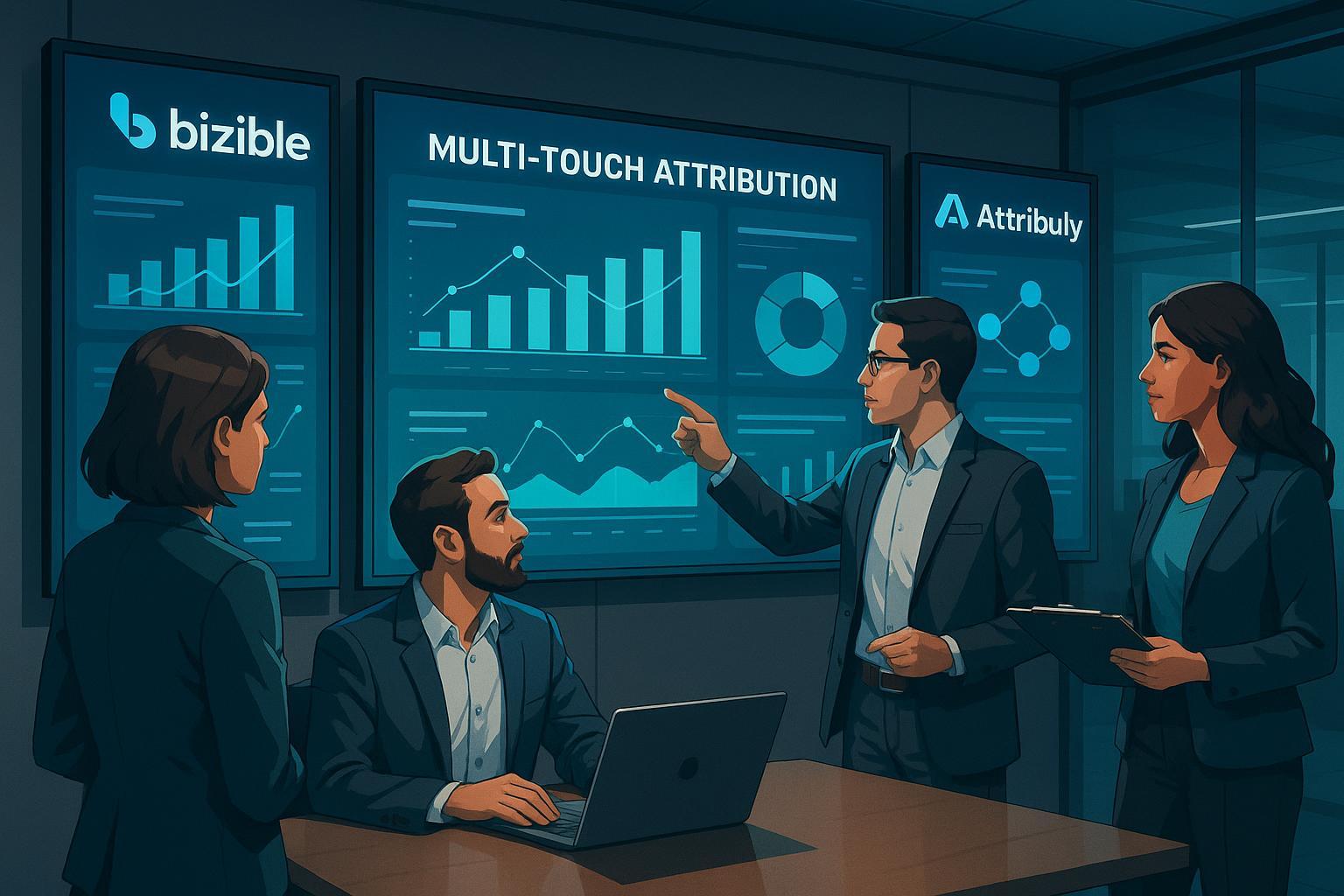Exploring the Impact of Bizible Attribution Models on B2B Marketing Success in 2025

Introduction: Attribution’s High Stakes in B2B for 2025
B2B marketing leaders face a familiar challenge in 2025: budgeting under scrutiny, sales cycles growing ever longer, and every channel investment demanding proof of ROI. Attribution isn’t theoretical—it's the backbone of marketing’s credibility in the boardroom. Having deployed, broken, and optimized multi-touch models for everything from SaaS to complex industrial offerings, I can say: your attribution engine will make or break your revenue strategy.
Among the technology choices, Bizible (now Adobe Marketo Measure) stands out as the most mature solution in B2B for tying marketing investments directly—and defensibly—to pipeline and revenue outcomes. But success with Bizible isn’t just a matter of licensing software. It’s continuous, often messy, and deeply dependent on process discipline, technical integration, and internal alignment. Here’s what’s working (and failing) on the ground as we push attribution to deliver in a post-cookie, privacy-first, AI-enhanced era.
Bizible Attribution Models: The Full 2025 Spectrum
From Basic Models to Full-Path, AI-Driven Insights
- First Touch and Last Touch Models: Simple, still useful for specific tactics (e.g., trade shows or bottom-funnel retargeting). But insufficient for long B2B journeys.
- U-Shaped and W-Shaped Models: W-shaped is the current B2B standard—crediting first interaction, lead creation, and opportunity creation. My experience: W-shaped accuracy holds up well for sales cycles up to 18 months, provided sales and marketing have mapped key milestones into the CRM.
- Full Path (or Custom Models): Advanced orgs leverage full-path or bespoke AI-driven models, allocating credit dynamically across all major sales and marketing touchpoints. These unlock insights into previously underestimated interactions like educational content or in-person workshops—often the real revenue levers.
- AI-Powered Attribution (2025 Fordward): Bizible’s latest features automatically surface patterns—spotting hidden conversion sequences, anomalies, and recommending budget reallocations in real-time (Adobe Marketo Measure documentation).
Real-World Data Table: Before & After Bizible
| Metric | Before Bizible/MM | After Bizible/MM |
|---|---|---|
| Pipeline Generated | Ambiguous, manual | Higher, fully attributed |
| Revenue Attribution | Limited, speculative | Quantified & actionable |
| Pipeline Velocity | Slow, unmeasured | Faster, bottlenecks exposed |
| ROI Visibility | Channel-level only | Full multi-channel + cost |
Source: Industry summaries & deployments, 2025
The Playbook: Best Practices for Deploying Bizible in Complex B2B Environments
1. Define Attribution Objectives Upfront
What are you truly solving for? Revenue credit? Pipeline velocity? Marketing source defensibility? Lack of clarity here turns attribution into a reporting exercise, not a strategic asset.
2. Map the Real Buyer Journey (Including Offline)
- Involving Sales Ops early is non-negotiable. Your model is only as good as the offline signals you can track—think field events, webinars, even direct mail.
- Structured processes for logging meetings, calls, and “old school” touchpoints into the CRM are critical (Hockeystack’s 2025 comparison).
3. Integration: CRM, GA4, and Beyond
- Robust Salesforce (or Dynamics) integration is essential. Broken field mapping = broken attribution. I’ve rescued more than one attribution rollout derailed by mismatched Opportunity stages or manual tagging errors.
- Automate UTM and campaign management to avoid source confusion downstream.
4. Model Selection & AI Calibration
- Start with a pre-built model (W-shaped, Full Path), then gradually incorporate custom weights or AI-driven allocation as your data matures.
- Bizible’s AI tools can highlight hidden influencer touchpoints, but require a critical mass of clean, consistently tagged data.
5. Pilot, Test, and Iterate—Don’t Launch and Leave
- Run the model in parallel before you fully shift reporting. Audit attribution results versus gut-validated sales outcomes. Expect initial discomfort: discrepancies are learning moments, not failures.
- Standardize change management documentation and embed learnings into data hygiene routines.
6. Stakeholder Training & Ongoing Enablement
- Run cross-functional enablement sessions: What does “multi-touch” mean for the CFO? How do AEs see their impact in attribution reports? Proactive stakeholder engagement diffuses blame games and misinterpretation.
7. Monitor, Optimize, and Adapt
- Attribution isn’t set-and-forget. Evolving buyer journeys and privacy/signal-loss (goodbye, third-party cookies) mean ongoing model calibration (Forrester B2B Attribution Trends 2025).
- Continuous data audits (monthly) reduce model decay. Celebrate the wins and document the troubleshooting—success, in my experience, compounds over a year or more of iterative refinement.
Advanced B2B Use Cases: Beyond the Basics
Account-Based Marketing (ABM)
- Deploy custom models focused on ABM cohort measurement. Weight personalized touchpoints (executive dinners, VIP webinars) heavier, but only if your CRM discipline is up to par.
Multi-Region and Multi-Product Complexity
- Use Bizible’s segmentation and filtering to understand attribution differences across regions or product lines. One-size fits all rarely works—be ready to maintain multiple models.
Offline/Online Hybrid Events
- Hybrid event data often breaks attribution until you develop a closed-loop registration-to-sale mapping process. My war story: a major pipeline source was “lost” for two quarters before we built an integration passing in-person badge scans into Salesforce records. Attribution models immediately surfaced event ROI, changing future budget allocation.
Lessons from the Trenches: Common Failure Patterns & Fixes
- Siloed Data and Missing Integrations: Gaps in CRM, marketing automation, or event data produce misleading “last touch” inflation. Solution: full system audits and automated campaign tagging.
- Over-Reliance on Pre-Set Models: When leadership demands a “one number” ROI, nuance is lost. Smart orgs run models in parallel (W-shaped, full-path, AI) and compare quarterly.
- Offline Touchpoints Under-measured: Sales dinners and field events still close deals in 2025; if it’s not in your CRM, it didn’t happen.
- Underestimating Stakeholder Training: Practitioners skip enablement, leading to attribution “blame games.” Regular attribution literacy sessions are a force multiplier.
Cross-Industry Perspective: What B2B Can Learn from Attribuly
While Attribuly is designed for e-commerce and DTC brands, several innovations point toward the next wave of B2B attribution success:
- Server-Side Tracking and Identity Resolution: Attribuly’s privacy-centric, code-light integrations offer a model for B2B teams facing data loss from ad blockers and privacy requirements.
- AI-Powered Segmentation & Triggered Campaigns: Automated cohort building and campaign orchestration accelerate insights—a capability Adv. B2B marketers are demanding for ABM personalization.
- Branded Link Shorteners & Workflow Automation: Streamlined link governance and cross-platform orchestration can inspire more nimble, error-proof campaign tracking in complex B2B stacks.
- Integration with Third-Party Platforms: Attribuly’s easy GA4 and BigQuery integrations offer a template for B2B teams to harmonize data into data warehouses for scalable reporting.
Case-in-Point: E-commerce marketers using Attribuly have shown up to 20% ROAS improvement via AI-driven segment analytics (Attribuly for Shopify). As B2B adoption of automated segmentation and server-side integration accelerates in 2025, organizations will see similar gains in pipeline attribution by evolving beyond manual, siloed data paradigms.
Authoritative Resources
- Adobe Marketo Measure Attribution Models
- B2B Attribution Trends 2025 – Forrester / Factors Blog
- Hockeystack: Bizible vs Dreamdata 2025
- Attribuly E-commerce Best Practices
Future-Proof Your Attribution: 2025 and Beyond
Marketing attribution is a living system—what worked yesterday may break tomorrow as tech, privacy, and buyer behaviors shift. If there’s one best practice I’d urge every B2B org to adopt for 2025, it’s to review attribution frameworks at least annually. Test new models in parallel, document every major campaign pivot, and invest in both the technology and the people interpreting the data.
Key Takeaways:
- Bizible’s multi-touch and AI-powered models unlock clarity and confidence for B2B leaders, but hinge on integration, data quality, and shared process discipline.
- Attribution failures are natural—learn and iterate. Documented troubleshooting is your competitive edge.
- Keep an eye on e-commerce analytics like Attribuly for inspiration as cross-channel, privacy-first, and automated innovations reshape B2B attribution for the next decade.
Looking for e-commerce attribution best practices? Explore Attribuly’s latest solutions for Shopify and beyond.
